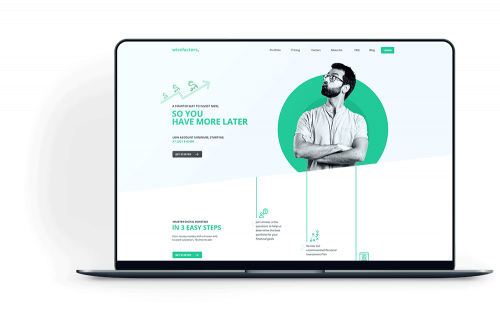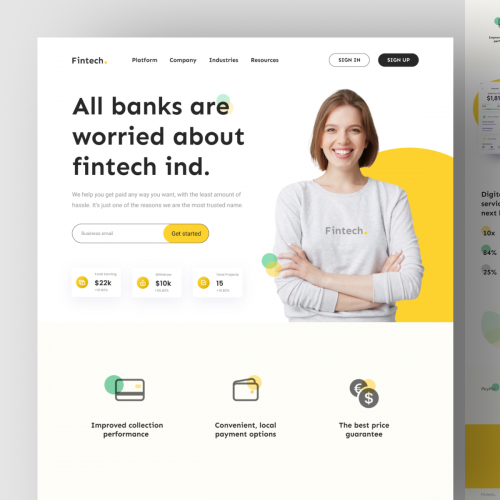The Power of User-Centered Site Style in Growing Your Online Audience
In a significantly affordable electronic landscape, the relevance of user-centered internet site layout can not be overemphasized. By concentrating on the demands and actions of customers, businesses can create sites that not just bring in however likewise involve a diverse audience. Reliable design concepts-- such as user-friendly navigation and accessibility-- are essential in cultivating individual fulfillment and loyalty. Comprehending how to take advantage of these principles effectively elevates critical concerns about application and impact. What approaches can organizations take on to ensure their layouts resonate with users and ultimately drive development?

Comprehending User-Centered Design
User-Centered Layout (UCD) is an essential approach to web site development that focuses on the requirements, choices, and habits of end users throughout the layout process. This technique highlights understanding individuals deeply-- via research study methods such as interviews, studies, and functionality testing-- to produce an internet site that reverberates with them. By integrating user comments at every phase, designers can ensure that the final product aligns very closely with customer assumptions.
UCD advertises repetitive design, where models are examined and improved based on individual communications and experiences. This cycle not only boosts usability however additionally fosters a sense of possession amongst users, as they feel their input is valued and impactful. Furthermore, UCD aids identify prospective obstacles and pain points in the customer trip, allowing designers to attend to these obstacles proactively.
Ultimately, accepting UCD causes internet sites that are much more user-friendly, interesting, and reliable. By positioning users at the center of the layout procedure, organizations can produce electronic experiences that not only draw in yet also keep their target audience, driving higher contentment and loyalty. In a competitive on-line landscape, this approach is necessary for attaining continual success.
Key Concepts of Customer Experience
An effective individual experience (UX) pivots on several crucial concepts that guide the design process and improve interaction between users and the website. Usability is paramount; the website has to be instinctive, permitting users to navigate easily and discover info quickly. This consists of clear labeling and a logical structure that decreases cognitive lots.
Second of all, availability plays a vital function in guaranteeing that all users, no matter of their abilities or handicaps, can effectively involve with the site. Including alt text for photos, keyboard navigating, and screen viewers compatibility promotes inclusivity.
Uniformity is an additional vital concept. A cohesive style language, from color design to typography, aids customers construct knowledge and trust fund with the site (Website Design). It additionally strengthens brand name identity
Moreover, comments devices are vital. Customers ought to obtain clear and prompt reactions to their activities, whether through aesthetic signs or confirmation messages, which boosts their confidence in browsing the website.
Finally, mobile responsiveness can not be overlooked. With a raising number of individuals accessing websites using mobile phones, a layout that adapts flawlessly to numerous screen sizes is essential for maintaining a favorable customer experience.

Benefits for Online Engagement
Reliable online interaction supplies various advantages that can substantially enhance a web site's total performance - Website Design. By cultivating meaningful communications between individuals and the website, organizations can cultivate a devoted audience that returns with consistency. Involved helpful hints individuals are more probable to share web content, therefore increasing natural reach and bring in new site visitors through word-of-mouth promotion
Improved online engagement also causes boosted user contentment. When users discover an internet site that resonates with their requirements, they are a lot more likely to explore its offerings thoroughly, which can cause greater conversion rates. In addition, interesting content motivates individuals to spend more time on the website, reducing bounce prices and favorably influencing online search engine ranking formulas.
Moreover, reliable interaction offers very useful insights right into customer preferences and behaviors (Website Design). By examining individual communications, companies can customize their web content and design techniques to satisfy the progressing assumptions of their target market. This flexible technique not just improves involvement yet additionally enhances the brand name's track record find this as user-centric and receptive
Eventually, prioritizing online engagement through user-centered style creates a thriving ecological community where both the target market and the company advantage, leading to continual development and success in the electronic landscape.

Techniques for Efficient Style
To take full advantage of the advantages of online interaction, utilizing certain strategies in internet site layout is paramount. First, intuitive navigation is vital; individuals must conveniently locate details without confusion. A well-structured menu, clear labels, and a rational power structure boost the customer experience and lower bounce prices.
Second, receptive layout is critical in today's multi-device setting. Making sure that a web site adapts seamlessly to numerous display sizes fosters ease of access, thus accommodating a more comprehensive target market. This adaptability not just boosts individual complete satisfaction but additionally positively impacts search engine positions.
Third, the usage of visual power structure guides users' focus to vital elements, such as phone call to action (CTAs) Using contrasting colors, differing font dimensions, and tactical spacing can effectively guide users towards preferred activities, facilitating higher communication.
Additionally, implementing regular branding across all web pages constructs depend on and recognition. A natural shade scheme, typography, and images strengthen brand name identity and develop a professional look.
Lastly, enhancing loading speeds is crucial. Individuals are much less likely to engage with a slow-loading website, making efficiency optimization a vital facet of effective style. By including these techniques, web site makers can boost user experience and inevitably click now expand their on the internet target market.
Real-World Success Stories
Success stories in user-centered web site style highlight the substantial advantages of focusing on customer experience. As an outcome, they experienced a 250% rise in on-line contributions, showing just how an instinctive layout can drive customer involvement and assistance.
An additional engaging instance is that of Airbnb, which made use of user-centered layout concepts to boost their reservation procedure. By simplifying the user journey and integrating individualized referrals, they dramatically lowered website desertion rates. This concentrate on user experience added to an earnings development of over 70% in a solitary year, highlighting the connection between well-designed user interfaces and economic success.
Moreover, the e-commerce giant, ASOS, applied individual screening to improve their mobile application. By attending to individual pain factors, they achieved an impressive 30% rise in mobile sales. These examples highlight that purchasing user-centered layout not only improves user complete satisfaction however likewise drives tangible business outcomes, reinforcing the crucial duty of individual experience in achieving on-line growth.
Conclusion
Finally, user-centered web site design offers as an important strategy for improving on the internet audience involvement. By prioritizing customer needs and choices, businesses can produce easily accessible and user-friendly digital experiences that promote commitment and drive conversions. The assimilation of customer responses throughout the layout process not only lowers bounce prices however also motivates exploration. Eventually, adopting efficient user-centered layout concepts can considerably add to a company's success in a competitive digital landscape.
User-Centered Design (UCD) is a fundamental approach to web site development that prioritizes the needs, preferences, and behaviors of end users throughout the design procedure. By including individual responses at every phase, developers can make sure that the final item straightens very closely with customer assumptions.
An effective customer experience (UX) pivots on numerous vital concepts that lead the layout procedure and boost communication in between individuals and the web site.Success stories in user-centered site style illustrate the tangible benefits of focusing on customer experience. These instances highlight that spending in user-centered layout not just improves individual fulfillment but likewise drives tangible business outcomes, enhancing the essential function of user experience in achieving on-line development.